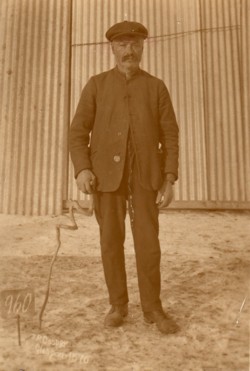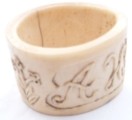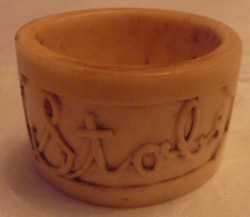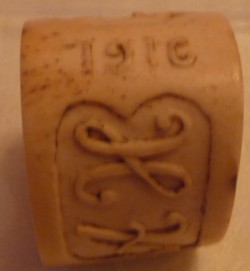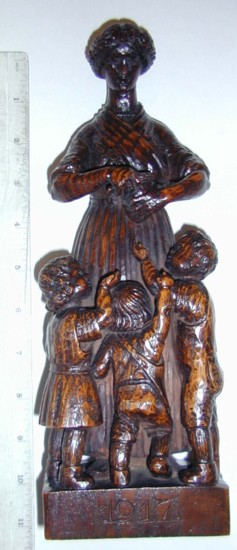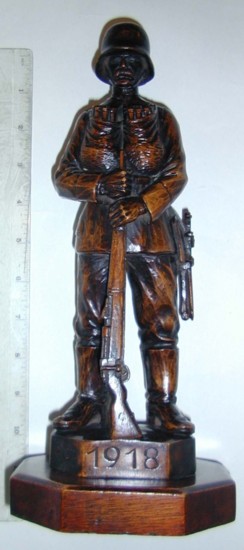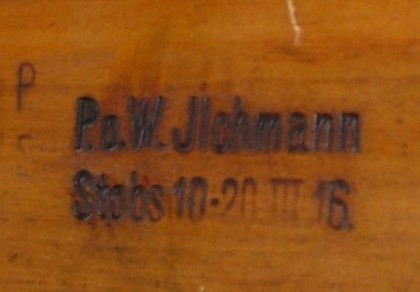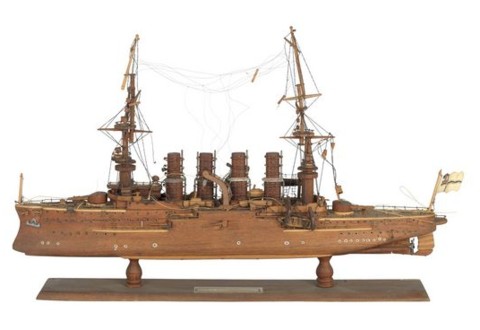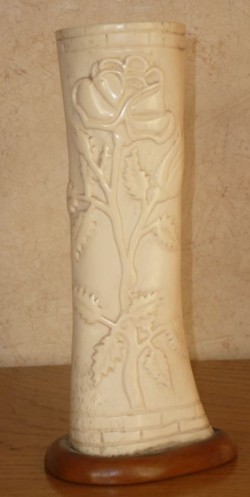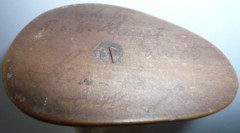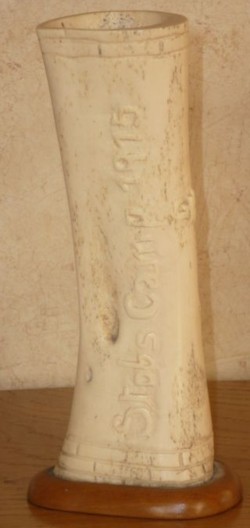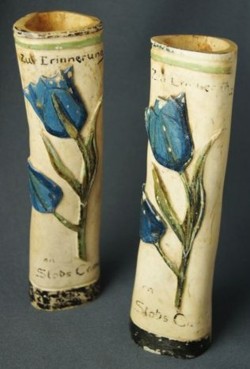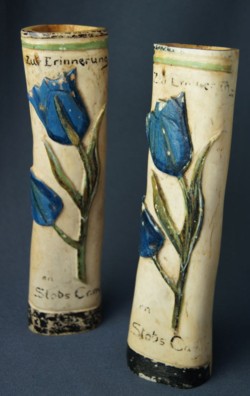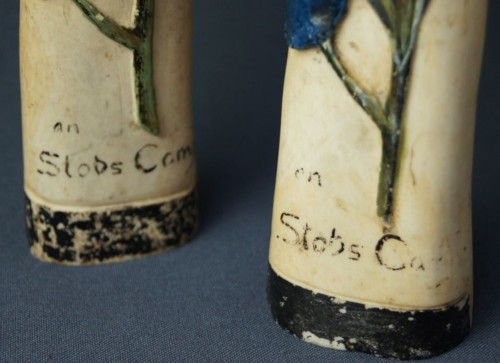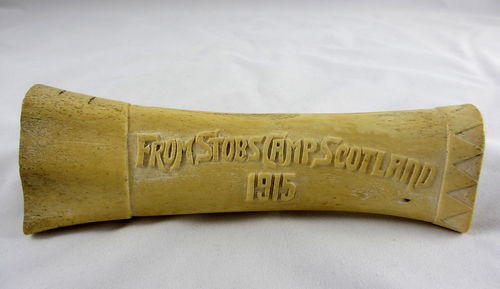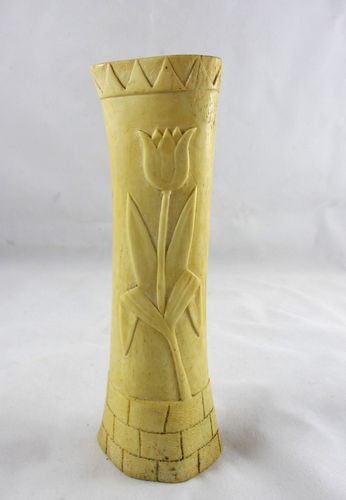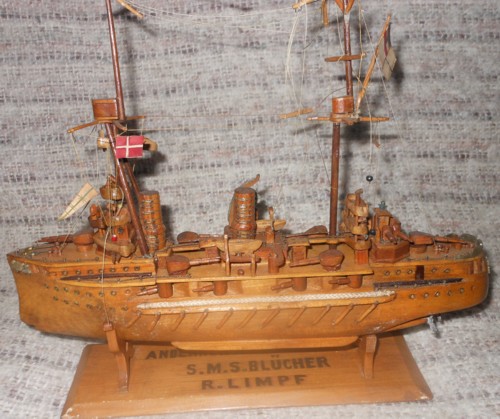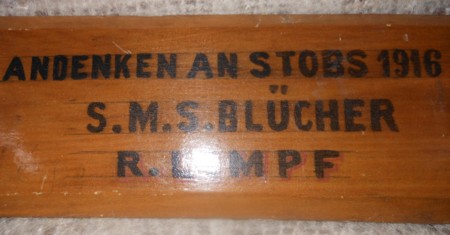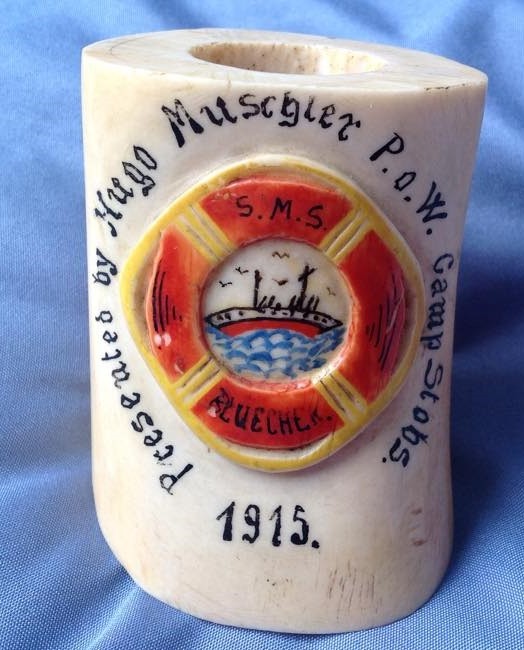|
POW Crafts |
|||
|
|
|||
|
|
The postcard to the left is captioned : "Christmas exhibition organised for the Stobs newspaper, Stobs Prisoner-of-War Camp, 1915"
The prisoners had to utilise what equipment and materials they could get from around the camp so it is astounding to see what remarkable objects they could fashion. Below are some examples of the objects that were produced at Stobs during the Great War by the prisoners there: |
||
|
|
|||
|
|
The man to the left is Johann Jussen who was a German civilian. He was married to Lynda Cole's Great Grandmother who was also German. When the war broke out Johann was interned at Stobs and it is believed that Lynda's Great-Grandmother had to go back to Germany (she was allowed to return to the UK in 1931). It is thought that Johann died at an internee camp on the Isle of Man My thanks to Lynda Cole for the information and photos which show Johann at Stobs and a bone napkin ring he carved there with his wifes initials and the date of 1916.
|
|
|
|
|
|||
|
|
|
||
|
A family group of four 1917 |
A German Soldier 1918 |
||
|
Both of the above figures were donated to the Northumberland Fusiliers's Museum by Capt J. Kirkland. See: http://www.northumberlandfusiliers.org.uk/catalogue/placfram.htm |
|||
|
|
|||
|
|
|
||
|
Above: a letter rack from the author's collection made out of thin pine wood. The rack is inscribed on the bottom by its creator: P.o.W Jichmann that it was made at Stobs in March 1916. Below: a pine shelf also made by the same P.o.W Jichmann with the same date as above. Photos courtesy of Mr Robert Hare.
|
|||
|
|
|
||
|
|
|
||
|
A "Tramp" carved in 1919 at Stobs. Authors collection |
A "Fisherman" carved in 1919 at Stobs. Authors collection |
||
|
|
|||
|
|
|
||
|
Above; "Agnes' Bank" carved by a P.o.W at Stobs in 1915. Agnes may have been the sister of Private George Reid who may have trained at Stobs. George from the Canongate in Edinburgh was killed in France in August 1917. My thanks to Janis Thomson from Peebles for the above. |
|||
|
http://www.nmm.ac.uk/collections/explore/object.cfm?ID=SLR1371 |
Scharnhorst - port broadside © National Maritime Museum, Greenwich, London Scale: about 1:320. An ill-proportioned, roughly-made model of SMS ‘Scharnhorst’ (1906),
made from scraps of wood, but with a fascinating provenance. A paper label attached to the bottom of its display
case tells us that it was made in 1915 by German prisoners-of-war from ‘Scharnhorst’s’ sister ship the ‘Gneisenau’,
interned at Stobs Military Camp, Scotland, using wood found in HMS ‘Invincible’. |
||
|
|
|||
|
|
|
P.o.W Haupt Hut 55 Stobs Camp Scotland |
|
|
|
|||
|
|
|
|
|
|
|
|||
|
To the right: A carved animal bone Napkin Ring |
|||
|
|
|||
|
|
|
Several years ago, Deborah Durber inherited a beautiful carved wooden figure from
her father. My thanks to Deborah and Stephen Durber for the information and photos. |
|
|
|
|||
|
|
A solid metal egg cup from Stobs - but I very much doubt that the POWs there had the equipment to make such an item BUT I have been known to be wrong before! Authors collection. |
|
A napkin ring carved from an animal bone. On one side it bears the name "Stobs" and on the other it is inscribed "1915". Authors collection. |
|
|
|||
|
Above and opposite - a carved animal bone featuring a tulip and inscribed "FROM STOBS CAMP SCOTLAND 1915" |
|
||
|
|
|||
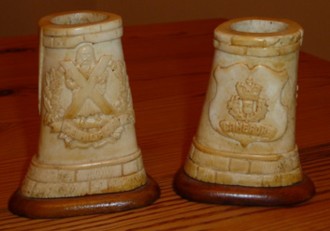 |
Ian McLachlan's grandfather, who was in the Cameron Highlanders, served at the camp in 1916. The 3 photographs show the 2 bone carvings with a Cameron bonnet badge and Cameron collar badge with his grandfather's initials JS (John Sangster), Stobs 1916, and made by P.o.W. 1916.
|
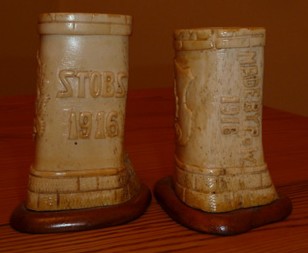 |
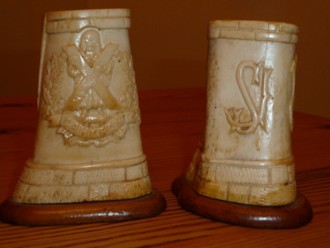 |
|
|
|||
|
|
The ship to the left is the German S.M.S Blucher - the model was made at Stobs in 1916 most probably by German sailors who had been captured when the ship was sunk by the Royal Navy. The model has been in the possession of Alan Gruber's family since the Great War. My thanks to Alan for the photographs. |
||
|
|
|||
|
|
My thanks to Lynda Watson for sending me a photograph of a carved bone (on the left) which her late
Grandmother kept in her sideboard. S.M.S Blucher was sunk in January 1915 and her sailors were interred at Stobs. |
||
|
|
|||
 |
|||
